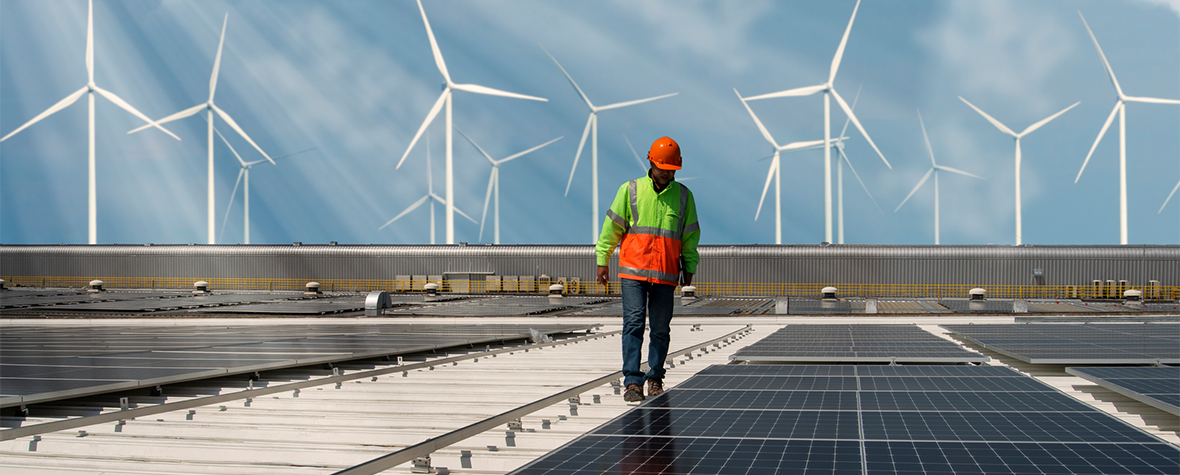California is home to a diverse economy driven by a variety of industries, including maritime shipping, construction, and tourism. In this eighth installment of our Empowering Electrification series, we’re exploring how electrifying these industries is a key strategy in reducing emissions and driving significant progress toward a cleaner, more sustainable future. In 2021, emissions from the industrial sector contributed 19.6% of California’s total GHG emissions.
Replacing fossil fuel-powered equipment and processes with electric alternatives fueled by renewable energy is essential for reducing emissions and combating climate change. This transition is aligned with state goals of achieving a 100% clean energy grid by 2045.
Emissions from the industry sector mainly come from fuel combustion sources, including refineries, oil and gas production, and cement plants and the businesses that depend on them, such as transportation, ports, and construction.
Ports
Electrifying ports like Oakland and Richmond is key to improving air quality and efficiency in goods movement in the Bay Area. These ports are receiving funding to transition diesel-powered cargo equipment to zero-emissions alternatives, upgrade utilities, and enhance electrical infrastructure. The efforts aim to transform California’s ports into sustainable and environmentally friendly economic hubs.
Construction
California’s construction industry is advancing electrification to reduce emissions and improve sustainability to, for example, replace diesel-powered equipment with electric alternatives like battery-powered excavators, cranes, and forklifts. Those changes are cutting greenhouse gas emissions and noise pollution while improving air quality.
State regulations now require new homes to include electric appliances and rooftop solar systems, accelerating the transition to clean energy. Additionally, buildings are adopting all-electric designs for heating, cooling, and water heating, supported by updated codes and incentives.
Tourism
California’s thriving tourism industry is shifting from gas-powered transportation to greener electric options. Visitors can now enjoy electric transit for sightseeing in iconic destinations like Napa and San Francisco. Disneyland is planning to electrify the diesel-fueled miniature cars at its Autopia ride, aligning with the state’s push toward sustainability. E-bikes are becoming a popular and eco-friendly choice for exploring, whether through guided nature tours or public bike rentals.
Meanwhile, the expansion of EV charging stations provides more convenience for EV drivers to alleviate range anxiety. By electrifying tourism, California protects its natural resources for residents and visitors alike.
Workforce
A knowledgeable and skilled workforce is essential to realize all these electrification efforts. As clean energy technologies expand, the demand for skilled professionals needed to design, implement, and maintain these systems continues to grow. Workers must be equipped with expertise in key areas like EV infrastructure, energy-efficient building systems, electrified port equipment, and agricultural tools powered by renewables.
Training programs focus on skills such as installing EV chargers, maintaining electric transit fleets, retrofitting buildings for all-electric systems, and integrating solar and battery storage technologies. By investing in these programs, we ensure the success of electrification while creating meaningful opportunities for workers in the green economy.
The Bay Area’s Contribution
As regions like the Bay Area make strides in industrial electrification and workforce training, they highlight the potential of electrification to transform industries worldwide. Milestones like achieving 100% renewable electricity for over 100 days demonstrate that ambitious climate goals are within reach. Through innovation, collaboration, and investment in clean energy, electrification is proving to be an attainable pathway toward a sustainable and resilient future.




